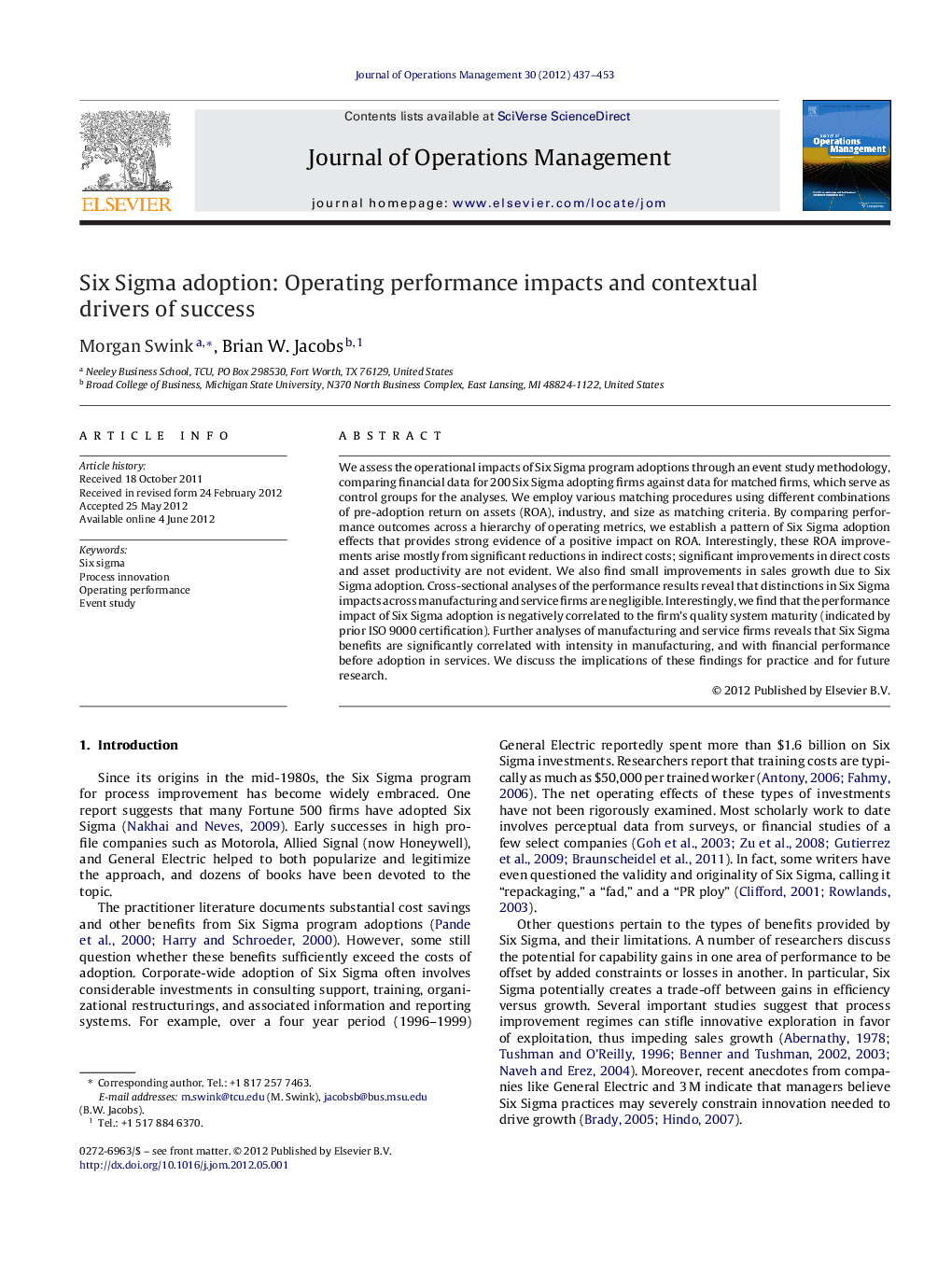| Article ID | Journal | Published Year | Pages | File Type |
|---|---|---|---|---|
| 1031860 | Journal of Operations Management | 2012 | 17 Pages |
We assess the operational impacts of Six Sigma program adoptions through an event study methodology, comparing financial data for 200 Six Sigma adopting firms against data for matched firms, which serve as control groups for the analyses. We employ various matching procedures using different combinations of pre-adoption return on assets (ROA), industry, and size as matching criteria. By comparing performance outcomes across a hierarchy of operating metrics, we establish a pattern of Six Sigma adoption effects that provides strong evidence of a positive impact on ROA. Interestingly, these ROA improvements arise mostly from significant reductions in indirect costs; significant improvements in direct costs and asset productivity are not evident. We also find small improvements in sales growth due to Six Sigma adoption. Cross-sectional analyses of the performance results reveal that distinctions in Six Sigma impacts across manufacturing and service firms are negligible. Interestingly, we find that the performance impact of Six Sigma adoption is negatively correlated to the firm's quality system maturity (indicated by prior ISO 9000 certification). Further analyses of manufacturing and service firms reveals that Six Sigma benefits are significantly correlated with intensity in manufacturing, and with financial performance before adoption in services. We discuss the implications of these findings for practice and for future research.
